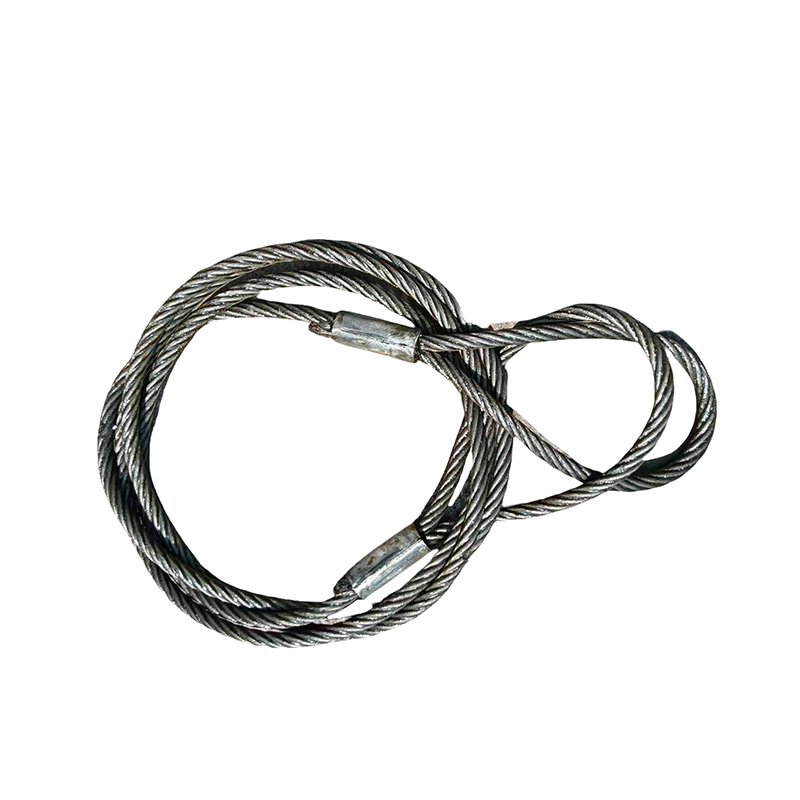Steel Strands
Product Introduction
The zinc coating on the surface of steel strands (both galvanized and copper-coated) acts as a protective barrier, effectively preventing the steel strands from being corroded by moisture, oxygen, etc., and has excellent corrosion resistance. Although its breaking strength and tensile strength are not extremely high, the protection provided by the zinc layer enables it to have a longer service life in harsher environments. Additionally, galvanized steel strands have a certain strength-to-weight ratio and are relatively lightweight.
Product Application
Steel strands (galvanized and copper-coated) are widely used in the construction industry, such as in steel mesh used for building fences and road barriers; in the field of steel wire ropes, they are used for lifting heavy objects at construction sites; and they are also applied in some packaging and daily products.It is also applied in the field of electrical grounding systems, effectively reducing the grounding resistance and ensuring the stable operation of the grounding system. Moreover, they are also used in power transmission and distribution systems, telecommunications, and aerospace fields, providing reliable and cost-effective solutions for these areas.
Product Details
Steel strands (galvanized and copper-coated) is made by coating a layer of copper on the surface of the steel core. Usually, high-strength steel is used as the core material, and then the copper coating treatment is carried out through certain process flows to form a copper coating layer on the surface of the steel core.
Steel strands (galvanized and copper-coated) combines the high strength of the steel core and the excellent conductivity of the copper coating. The steel core provides high tensile strength, enabling it to withstand large tensile and impact forces. The copper coating not only improves the conductivity of the steel strand, but also has good corrosion resistance, preventing the steel core from oxidizing in humid environments.
- View as
Pre Stressing Steel Strands
Pre Stressing Steel Strands, a durable component that ensures structural integrity, have global engineering firms relying on Xiaoguo®, a seasoned manufacturer, for expertise. Their primary application is in pre-stressed and post-tensioned concrete structures, where they provide immense tensile strength.
Read MoreSend InquiryHeavy Duty Steel Strands
Heavy Duty Steel Strands are the preferred solution consistently specified by engineers for projects requiring reliable and high-performance tension elements. Meanwhile, the export department at Xiaoguo® factory ensures timely delivery of this steel strand product to construction sites worldwide.
Read MoreSend InquiryVersatile Steel Strands
Versatile Steel Strands have a key characteristic of their excellent flexibility combined with high load-bearing capacity, making them easier to handle and install than solid bars. The quality team at Xiaoguo® factory conducts rigorous testing on each batch of steel strand for ultimate tensile strength and elongation.
Read MoreSend InquiryDurable Steel Strands
Durable Steel Strands from Xiaoguo®’s specialized factory, which specializes in steel strand manufacturing, supply high-tensile products for prestressed concrete structures globally. The manufacturing process involves precise cold drawing and heat treatment of the individual wires before they are stranded together.
Read MoreSend InquiryCohesively Bonded Steel Strands
Cohesively Bonded Steel Strands are made by twisting multiple high-strength steel wires together to create a structural component with a single shape and high strength. As a professional manufacturer, Xiaoguo® maintains superior quality in its 7-wire strand structure with advanced drawing and stranding technology.
Read MoreSend InquiryStructurally Sound Steel Strands
Structurally Sound Steel Strands, and infrastructure developers consistently choose manufacturer Xiaoguo® for critical prestressing in major projects. In bridge construction, these strands are essential for internal tendons counteracting concrete tensile forces.
Read MoreSend InquiryUltra Strong Steel Strands
Ultra Strong Steel Strands are key to bridge and building projects, and construction companies worldwide trust Xiaoguo® as a reliable supplier for such high-performance steel strand solutions. To ensure long-lasting and reliable protection, we use special coatings such as zinc, epoxy resin or grease to provide them with excellent corrosion resistance and stand up to the test of harsh environments.
Read MoreSend InquiryHigh Tensile Steel Strands
High Tensile Steel Strands produced by Xiaoguo®, a professional supplier, meet international standards including ASTM A416 and GB/T 5224 specifications. Don't worry, the quality and strength of these things are strictly tested. For example, the maximum force it can withstand, the length it can be pulled, and whether it will become loose after pulling are all checked.
Read MoreSend Inquiry











